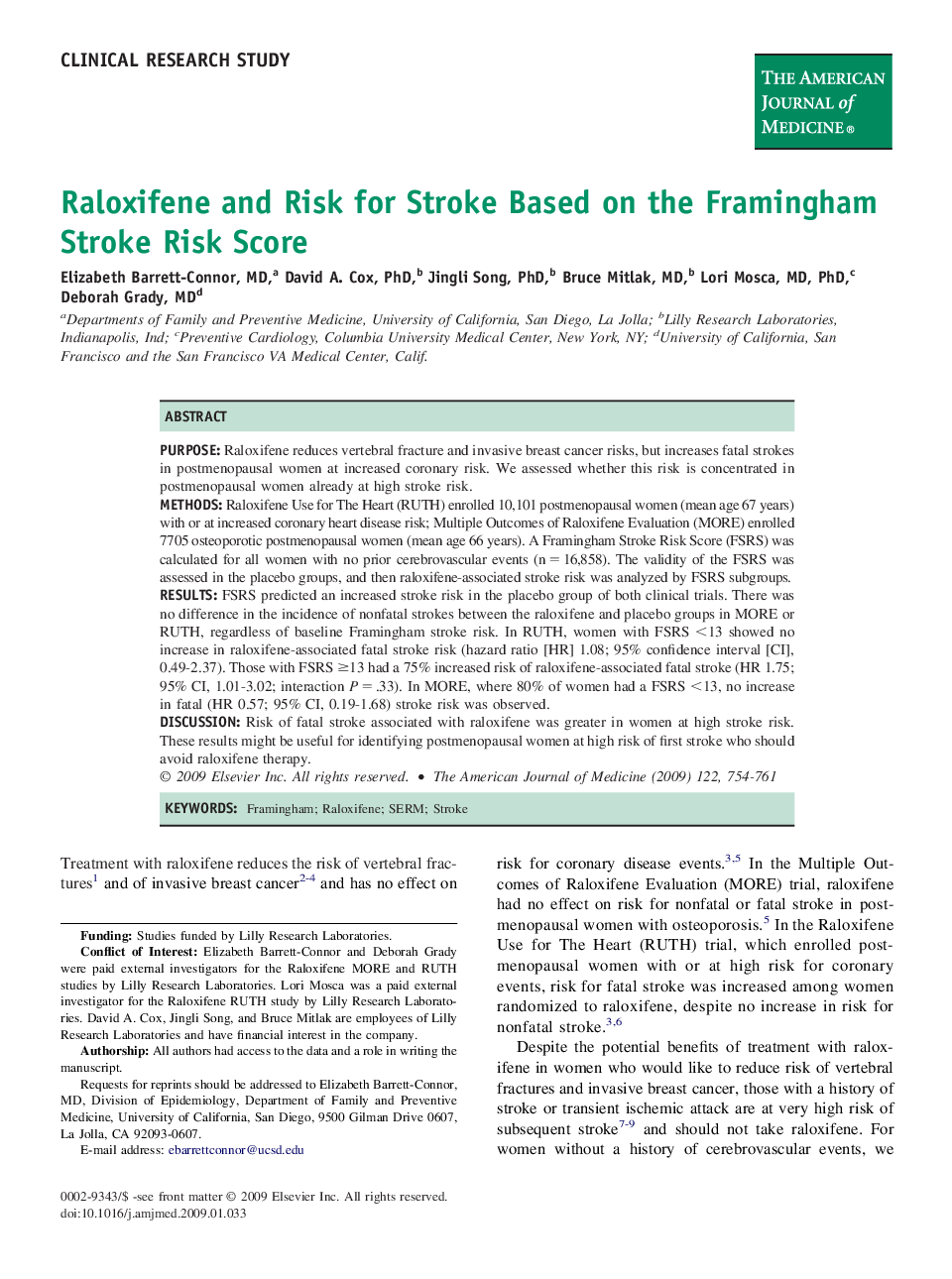| Article ID | Journal | Published Year | Pages | File Type |
|---|---|---|---|---|
| 2719207 | The American Journal of Medicine | 2009 | 8 Pages |
PurposeRaloxifene reduces vertebral fracture and invasive breast cancer risks, but increases fatal strokes in postmenopausal women at increased coronary risk. We assessed whether this risk is concentrated in postmenopausal women already at high stroke risk.MethodsRaloxifene Use for The Heart (RUTH) enrolled 10,101 postmenopausal women (mean age 67 years) with or at increased coronary heart disease risk; Multiple Outcomes of Raloxifene Evaluation (MORE) enrolled 7705 osteoporotic postmenopausal women (mean age 66 years). A Framingham Stroke Risk Score (FSRS) was calculated for all women with no prior cerebrovascular events (n = 16,858). The validity of the FSRS was assessed in the placebo groups, and then raloxifene-associated stroke risk was analyzed by FSRS subgroups.ResultsFSRS predicted an increased stroke risk in the placebo group of both clinical trials. There was no difference in the incidence of nonfatal strokes between the raloxifene and placebo groups in MORE or RUTH, regardless of baseline Framingham stroke risk. In RUTH, women with FSRS <13 showed no increase in raloxifene-associated fatal stroke risk (hazard ratio [HR] 1.08; 95% confidence interval [CI], 0.49-2.37). Those with FSRS ≥13 had a 75% increased risk of raloxifene-associated fatal stroke (HR 1.75; 95% CI, 1.01-3.02; interaction P = .33). In MORE, where 80% of women had a FSRS <13, no increase in fatal (HR 0.57; 95% CI, 0.19-1.68) stroke risk was observed.DiscussionRisk of fatal stroke associated with raloxifene was greater in women at high stroke risk. These results might be useful for identifying postmenopausal women at high risk of first stroke who should avoid raloxifene therapy.
